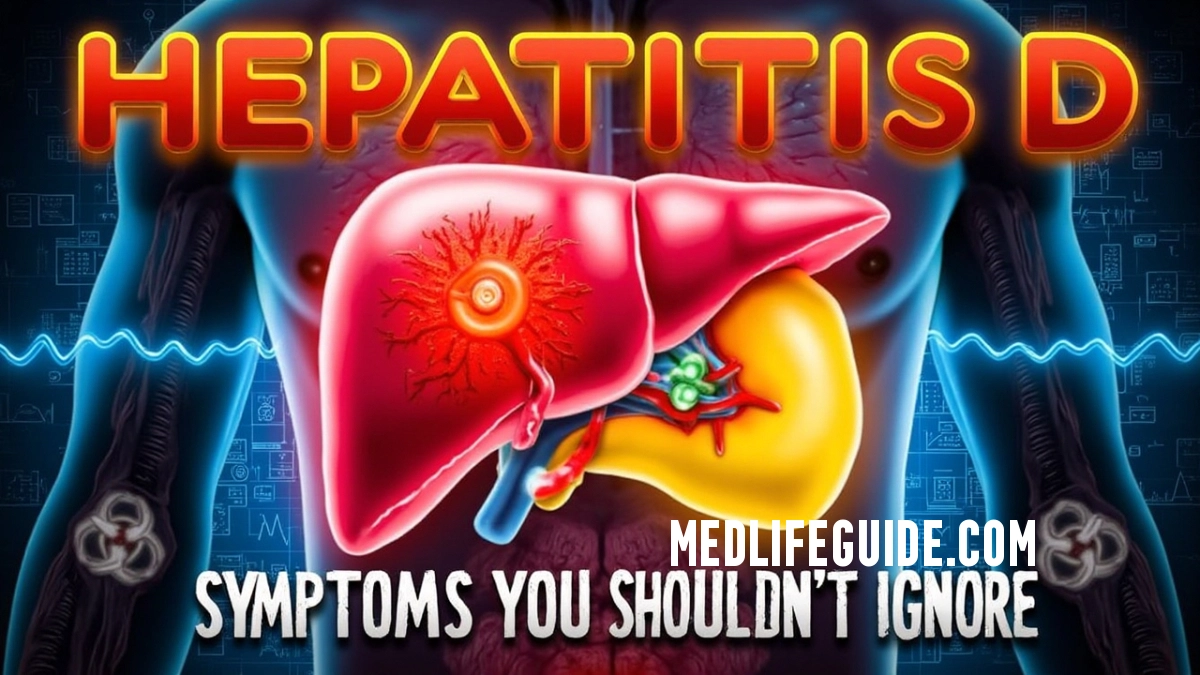Hepatitis D (HDV) is a rare but serious liver infection that only occurs in people already infected with Hepatitis B (HBV). Often called a “satellite virus,” HDV complicates HBV infections, leading to faster liver damage. Recognizing Hepatitis D symptoms early can be life-saving, yet many people mistake them for general fatigue or flu.
In this guide, we’ll break down:
- The unique symptoms of Hepatitis D
- How they differ from Hepatitis B
- When to seek emergency care
- Long-term complications
- Prevention and next steps
What is Hepatitis D?
Hepatitis D is caused by the HDV virus, which cannot survive without Hepatitis B. It spreads through blood and bodily fluids, similar to HBV. There are two types of infection:
- Co-infection – HDV and HBV are contracted simultaneously.
- Superinfection – HDV infects someone who already has chronic Hepatitis B (often more severe).
Unlike Hepatitis B or C, HDV progresses rapidly, increasing the risk of cirrhosis, liver failure, and liver cancer.
Early Hepatitis D Symptoms
Symptoms usually appear 2-8 weeks after exposure. Many people experience:
1. Flu-Like Fatigue & Weakness
- Extreme tiredness that doesn’t improve with rest
- Muscle aches and joint pain
2. Digestive Issues
- Loss of appetite
- Nausea and vomiting
- Abdominal pain (especially on the right side, near the liver)
3. Jaundice (Yellowing of Skin & Eyes)
A classic sign of liver distress, jaundice occurs when the liver can’t process bilirubin properly.
4. Dark Urine & Pale Stools
- Urine may appear cola-colored due to excess bilirubin.
- Stools become clay-colored from lack of bile.
Advanced Symptoms (When to Seek Emergency Care)
If untreated, Hepatitis D can lead to acute liver failure. Warning signs include:
- Severe abdominal swelling (ascites)
- Confusion or slurred speech (hepatic encephalopathy)
- Uncontrolled bleeding (due to reduced clotting factors)
- Persistent high fever
Key Takeaway: If you have Hepatitis B and develop these symptoms, see a doctor immediately. Early intervention can prevent irreversible damage.
How Hepatitis D Differs from Other Hepatitis Types
| Symptom | Hepatitis D | Hepatitis B | Hepatitis C |
|---|---|---|---|
| Onset Speed | Rapid (weeks) | Gradual (months) | Slow (years) |
| Severity | Often severe | Mild to moderate | Usually mild early on |
| Jaundice | Common | Less common | Rare in early stages |
Long-Term Complications
Chronic Hepatitis D can cause:
- Liver cirrhosis (scarring)
- Liver cancer (HCC)
- Fulminant hepatitis (sudden liver failure)
Patients with both HBV and HDV have a 70% higher risk of cirrhosis within 5–10 years compared to HBV alone.
Prevention & Next Steps
Since HDV depends on HBV, the best prevention is:
- Hepatitis B vaccination (No vaccine exists for HDV alone)
- Avoiding needle sharing & unprotected sex
- Regular liver function tests if at risk
If you suspect Hepatitis D:
- Get tested (HDV antibody test).
- Consult a hepatologist for antiviral options.
- Monitor liver health with imaging and blood work.
Final Thoughts
Hepatitis D symptoms can be subtle at first but escalate quickly. If you have Hepatitis B, stay vigilant for fatigue, jaundice, and abdominal pain. Early detection saves lives.

